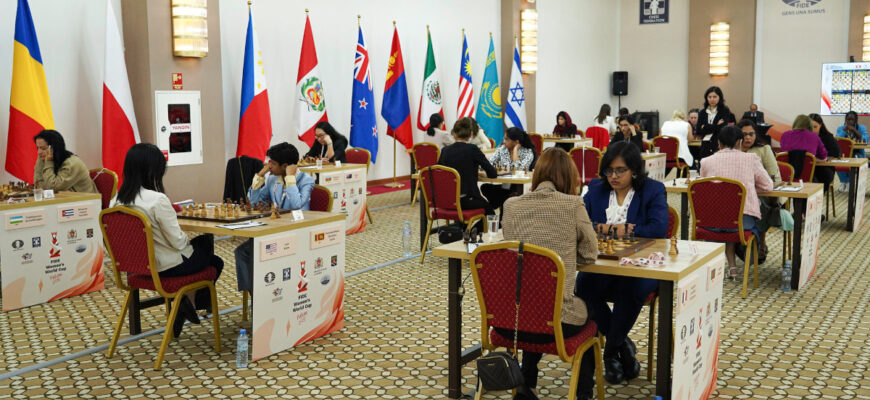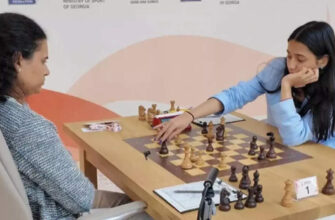The global chess stage is set to witness a formidable contest as the FIDE Women`s Chess World Cup 2025 officially commences this weekend in the picturesque city of Batumi, Georgia. What promises to be a three-week intellectual marathon, culminating in late July, brings together 107 of the world`s most accomplished female chess players, all vying for not just the coveted title but also a significant step towards the pinnacle of women`s chess.
The Ultimate Stakes: Beyond the Crown
While the World Cup winner`s trophy is a prestigious accolade in itself, the true strategic battle often revolves around the qualification spots for the 2026 FIDE Women`s Candidates Tournament. Only three players from this grueling knockout event will earn a direct ticket to the Candidates, a tournament whose victor will eventually challenge the reigning Women`s World Champion, Ju Wenjun, for the global title. This makes every move, every round, a high-stakes encounter, adding an extra layer of tension to an already demanding competition.
The journey from Batumi to the Women`s World Championship is long and arduous, but for the top three, it begins right here. The prize pool, a substantial US$691,250 with US$50,000 earmarked for the champion, provides a tangible reward, but the Candidates spots are arguably the ultimate currency in the realm of competitive chess.
The Field: A Global Assembly of Talent
The roster of 107 players is a who`s who of women`s chess, featuring grandmasters and rising stars from around the globe. While the reigning World Champion, Ju Wenjun, will not participate, the field is nonetheless packed with formidable talent. The top three seeds — Lei Tingjie, Zhu Jiner, and Tan Zhongyi — all hail from China, signaling a strong delegation from the chess powerhouse.
Alexandra Goryachkina, the defending champion from the 2023 World Cup in Baku, Azerbaijan, enters as the sixth seed. Notably, Goryachkina has already secured a Candidates spot through the FIDE Women`s Grand Prix, meaning her strong performance could potentially open up an additional qualification slot for the player finishing fourth in Batumi. Her presence, while not driven by the need for qualification, still makes her a formidable force and a benchmark for others.
India`s Strong Contingent: A Bid for Glory
India arrives in Batumi with a robust nine-player squad, poised to make a significant impact. Leading the charge is the highly experienced and decorated Koneru Humpy, seeded fourth. She, along with Harika Dronavalli (10th seed), Vaishali Rameshbabu (11th seed), and Divya Deshmukh (15th seed), will benefit from byes in the first round, a strategic advantage afforded by their strong international ratings.
Other talented Indian players in the field include Vantika Agrawal, Padmini Rout, PV Nandhidhaa, Priyanka K, and Kiran Manisha Mohanty, all ready to prove their mettle on this grand stage. In the previous World Cup, Harika Dronavalli reached the quarterfinals, demonstrating India`s capability to compete at the highest levels. This year, with a larger and arguably stronger contingent, the expectations for Indian players are deservedly even higher.
The Gauntlet: Understanding the Knockout Format
The World Cup employs a strict knockout format, making every match a do-or-die affair. The tournament consists of six rounds before the final, with the top 21 seeds receiving a strategic bye in the first round. Each round features a two-game classical chess match, with players alternating colors.
Time Controls and Tie-Breaks: The Pressure Cooker
Classical games are played with 90 minutes for the first 40 moves, followed by an additional 30 minutes, plus a 30-second increment per move from move one. Should a match be tied after the classical games, the real intensity begins with a series of tie-breaks, a true test of nerves and adaptability:
- First, two rapid games (25 minutes + 10-second increment per move).
- If still tied, two more rapid games (10 minutes + 10-second increment per move).
- Followed by two blitz games (5 minutes + 3-second increment per move).
- Finally, if equilibrium persists, a sudden-death blitz game (3 minutes + 2-second increment per move), where colors are determined by a draw of lots, and players keep switching until a decisive result is obtained. It`s a true test of nerves and quick thinking, often leading to spectacular, if not slightly frantic, finishes that can swing a match in mere seconds.
Projected Pathways and Potential Showdowns
The tournament draw has already hinted at intriguing potential matchups that could ignite the competition. India`s Divya Deshmukh could face a significant challenge against the second seed, Tan Zhongyi, in the fourth round – a clash that promises tactical fireworks. Similarly, Vaishali Rameshbabu might find herself opposite defending champion Alexandra Goryachkina at a similar stage, a formidable hurdle for any challenger. Koneru Humpy is projected to meet Switzerland`s Alexandra Kosteniuk in her potential fourth-round encounter, while Harika Dronavalli could clash with Kateryna Lagno. These early projections highlight the challenging paths ahead for all contenders, promising thrilling battles from the outset as players navigate their way through the knockout bracket.
As the FIDE Women`s Chess World Cup 2025 unfolds in Batumi, the chess world will be watching closely. With a blend of established champions, determined challengers, and a demanding format designed to test every aspect of a player`s skill, this tournament is not just a battle for a title, but a testament to the strategic depth and mental fortitude required at the highest echelons of women`s chess. Let the games begin!









